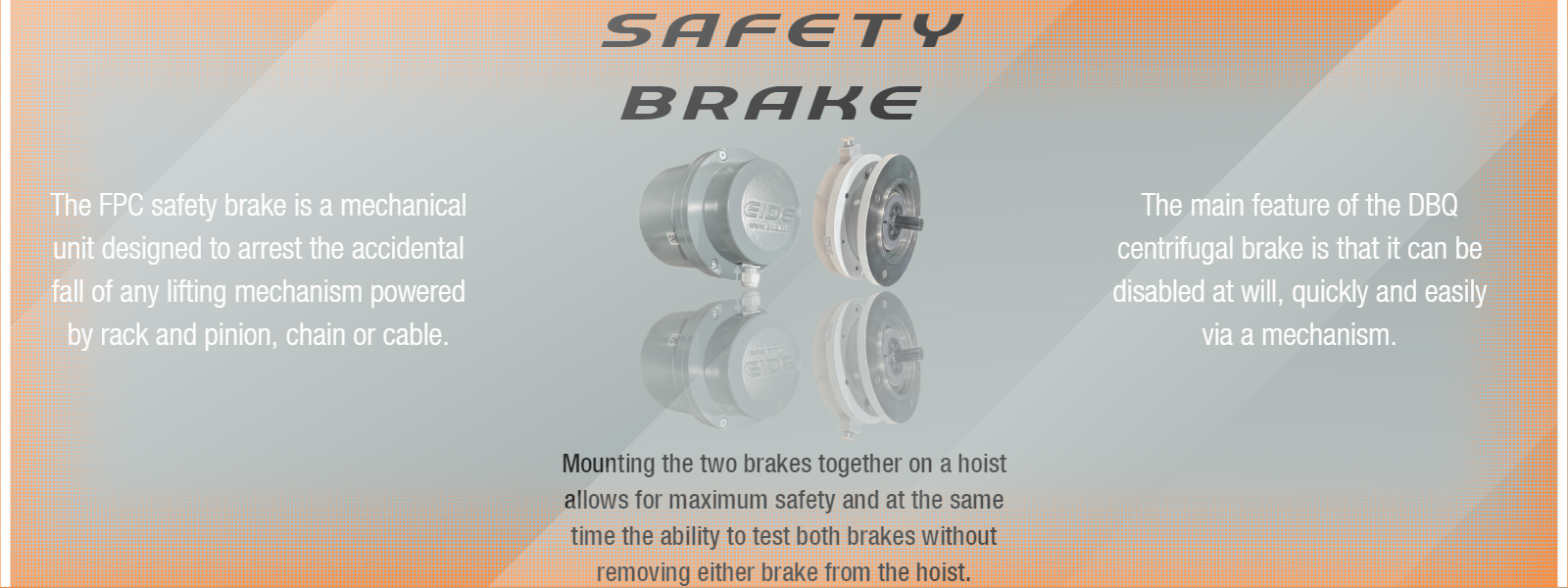
FPC and DBQ: The dynamic duo of safety
Mounting the FPC safety brake together with the spring brake and the DBQ centrifugal brake, provides additional protection against possible failure of the primary braking systems, increasing safety in the elevator.
The FPC safety brake is a mechanical unit intended to arrest the accidental fall of any rack-and-pinion, chain or rope-driven hoist mechanism.
The DBQ centrifugal brake is a safety brake used to prevent uncontrolled falls on any type of structure that lifts a load and has a parachute safety brake mounted on it.
Failures in the drive units may be such that neither the motor brakes (intended to activate when motorised travel stops) nor the centrifugal brakes (intended to limit the rate of descent) can take effect.
By using both braking systems, an additional layer of safety is provided in the event of failure of the primary braking systems.
The spring brake and the DBQ centrifugal brake are mechanical systems that depend on the proper functioning of the tractor system, while the FPC brake acts independently.
For this reason, mounting the FPC brake in addition to the motor spring brake and the DBQ centrifugal brake on an elevator allows for maximum safety and the ability to test both safety brakes without the need to remove either brake from the elevator.



